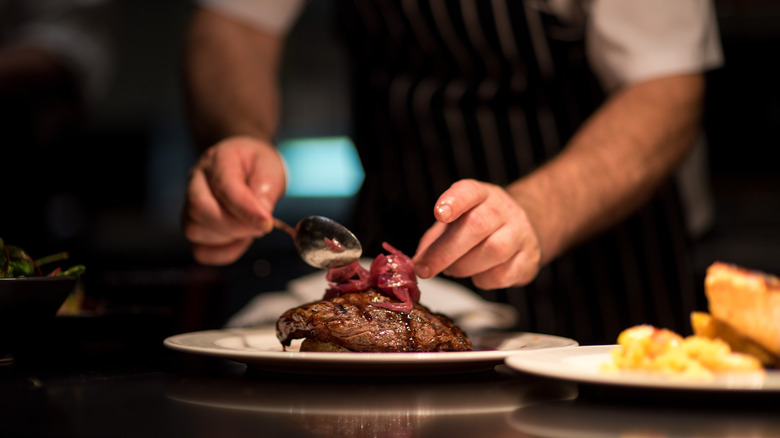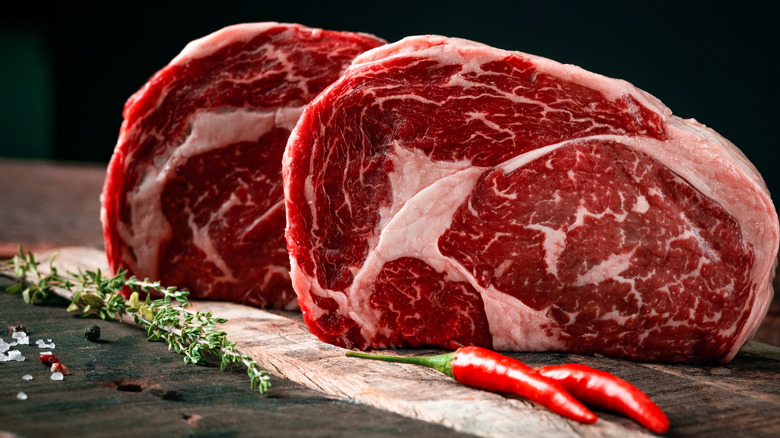Why Ribeye Steaks Are The Favorite Of Michelin Chefs
So you're having guests over for a fancy steak dinner, eager to impress. What cut of steak do you use? There are so many amazing cuts of beef: New York Strip, Filet Mignon, Skirt, Porterhouse, but where do you start?
Who better to consult than the authorities on the matter? Michelin Guide interviewed two chefs from Michelin Plate-awarded restaurants in Bangkok, Thailand — Chef Kevin B. Thomson of New York Steakhouse at the JW Marriott Hotel, and Chef Steve Doucakis of Quince — about how to cook the perfect steak.
Chef Thomson's New York Steakhouse is considered one of Bangkok's best steakhouses, featuring premium cuts of steak from all over the world in an elevated atmosphere. Chef Ducakus's Quince centers its menu around wood-fire cooking that uses charcoal, smoke, and woodfire heat methods to craft elevated Mediterranean fare — including fine steaks. Read as: these two chefs know steak.
Both steak masters unequivocally agreed on their favorite cut of steak. And given their combined accolades and experience, there's a very strong case to follow their lead.
You're the rib of my eye
In the Michelin Guide's interview with chef Kevin Thomson and Steve Doucakis, one steak reigns supreme for both: ribeye. Thomson sang ribeye's praises, saying, "the ribeye is my ultimate steak. It is the most flavorful cut and comes with very rich marbling, which delivers a superior taste when cooked. Just the right amount of fat to meat ratio. Its abundance of marbling makes it a great cut for grilling and slow roasting."
Ribeye steak comes from the rib section of the cow. The "eye" refers to the main muscle, longissimus dorsi, that runs from the cow's hip bone to the shoulder (via The Spruce Eats). Because this muscle isn't heavily used, this makes for a tender cut full of intramuscular fat, or marbling.
Doucakis also picks ribeye steaks for its marbling, emphasizing its charring abilities, "there is plenty of intramuscular fat that makes the steak super juicy and a cap of fat over the top that chars really well on the grill" (per Michelin Guide). Charring refers to burning or blackening something on its exterior to get a particular flavor. Because ribeye is such a tender and fatty cut, it's great for high-heat methods of cooking, like charcoal grills (via MasterClass).
Take it from Thomson and Doucakis, you can select ribeye with confidence for a flavorful, charred steak every time.

